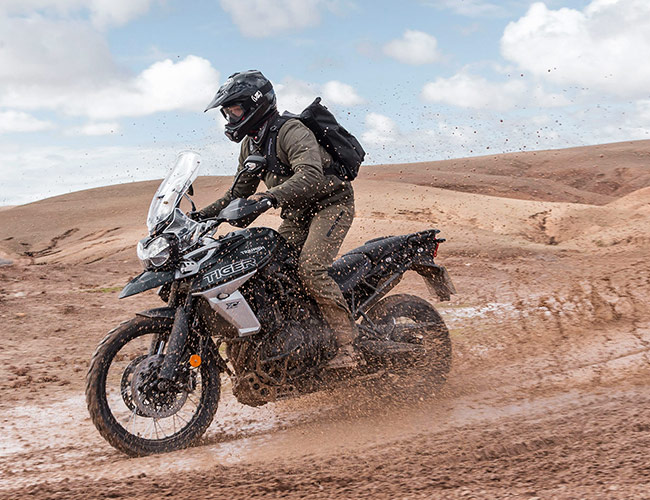It’s no secret the motorcycle industry is in dire straights. Baby Boomers, the most reliable and consistent motorcycle customer demographic for decades is aging out, and the sales numbers manufacturers and dealerships once relied upon just aren’t there anymore. Younger, upcoming generations, minority groups and female customer bases are all seen as possible wells of new, rejuvenated sales, but it’s short-sighted to say the industry’s problem is a lack of marketing to one group over the other. The real problem is much more primary than simply one rider’s interest over another. Cake, the new upstart company, based in Stockholm, Sweden, reckons it has the answer: the Cake Kalk might just be the perfect motorcycle for first-time riders.
The reason motorcycle sales are on the decline is the same reason the manual transmission is dying off. Almost, if not every, car on the market today has an automatic transmission as standard and manuals are rare options; more often than not, it’s the automatic cars being driven off the lots. Whether it’s because people aren’t bothering to learn, have no one to teach them or just can’t be bothered, the manual transmission is old tech and part of the past. Now flip that and imagine what car sales would be like if the manual transmissions were standard — and in most cases, the only option — on 99 percent of cars on sale. That’s the case for motorcycles.
Honda is the only large manufacturer utilizing automatic transmissions or clutchless systems, not including scooters like the Vespa and the current electric bike selection. I’m convinced it’s not the idea of riding a motorcycle that is turning new riders away, it’s instead learning the relatively complex system of operating a clutch with your left hand, shifting with your left foot, accelerating and operating the front brake with your right hand and braking the rear wheel with your right foot. In fact, I’ve been riding for nearly a decade now and just writing that out was intimidating and overwhelming.
Cake is out to put potential new riders on a motorcycle by bridging the gap between pedal bikes, electric-assist bikes and full-sized, full-power electric motorcycles. You would think the Cake Kalk would have some direct competition, but in terms of style, design and performance, the little Swedish electric motorcycle is all on its own.
The Good: Stefan Ytterborn, Cake’s founder and CEO (and founder of the helmet brand POC) is also a former brand marketer and designer at Ikea. His signature style is very apparent in the Kalk. The Kalk, whose name is a Swedish term for the limestone gravel the bikes are tested and developed on, has a simple, essentialist design — it’s the first thing you notice and admire about the company’s first bike. The sheer size of it, or lack thereof, is incredibly deceiving because even though it only has 16 horsepower and 31 lb-ft of torque, the bike only weighs just 154 lbs — or in industry terms, absolutely nothing. It might share a silhouette with a 125cc dirtbike, but the Cake hauls ass like bike twice its size. Power, combined with a lightweight chassis and tuned suspension translates into perfect traffic and trail carver.
Where Cake will succeed with the aformentioned marginalized, potential riders is with the bike’s three ride modes which dial in different levels of power, speed and acceleration. The different modes turn an already ridiculously approachable bike into one that’s even easier to ride. New riders will be able to learn, adapt and evolve at their own pace.
Who It’s For: Ideally, Cake says, it imagines the typical Kalk rider will commute into and around the city during the week and then hit the trails on the weekend. In the real world, however, that rider is incredibly rare. Yes, the Kalk makes an outstanding commuter machine and it can hit the trails like a lightweight enduro, but the person buying an electric vehicle for an efficient commute and a trail riding enthusiast tend not to be the same person.
That’s especially true here, because the Kalk costs $14,000 — it’s hard to imagine someone will risk trashing their daily commuter druring a weekend adventure. Could it do both? Of course. People buy Porsche 911s to simply cruise through town with, while others take them to the track — same car, totally different customers — and the 911 gets the job done in both instances beautifully. So, indeed, some customers may do both.
The third type of rider the Kalk is gunning for is the first-timer, which this is where it’ll find the most success. Its inherent ease of use, plus the fact that it’s far enough removed from electric bicycles yet is far more approachable than any dirt bike or street bike make it incredibly unintimidating.
Watch Out For: Right now, the battery Cake is using has a range of 50 miles, give or take, depending on how you ride. 50 miles might not sound like much, but for many city commuters (who live close to or in the city), that’s more than enough for a few days worth of going back and forth to the office.
For those rider looking to hit the trails, the battery drains in two to three hours with intense trail riding or just under an hour of full-throttle track time. To curb that, Cake linked up with the Swedish renewable energy company Utellus to develop portable solar panels to charge the bike when nowhere near an outlet. Another upshot is the bike can be fully charged in an hour or so.
Alternatives: It’s hard to say, really. You could shop for an electric-pedal assist mountain bike or road bike, but that’s an entirely different class of vehicle. And a pedal assist bike certainly won’t match the Kalk’s 50 mph top speed.
In the electric motorcycle department, Alta Motors and Zero are the only others worth a look. That being said, the Alta and Zero options are all-out motorcycles that aim almost exclusively at enthusiast and experienced riders. Comparing those options to the Cake bike would be similar to pitting a 125cc dirtbike up against 600cc street bikes. So, in that respect, the Cake bike stands on its own.
Review: When a new manufacturer sets out with a specific goal in mind and knocks it out of the park, there’s no ignoring it. We took the Kalk out for a ride around the woods of Hallshuk, Gotland, where the trails are tight, the trees impose on your personal space and look to bash your hands on the bars every chance they get. We traveled fast enough that I was pretty much almost crashing in every turn, but every time a tree or rock step out in front of me, it didn’t matter because the Cake is so damn light. All I had to do was look down the trail and effortlessly flick the bike left or with light pressure on the pegs and a quick juke of the handlebars. Cake wanted a well-tuned chassis with predictable power and handling, wrapped in a typically Swedish design — they got it.
Cake tested out a few different setups for power delivery, like placing the motor in the rear wheel hub. But, on quick, bumpy trials, with that much unsprung weight hanging out far from the center mass, the center of gravity is disrupted. Placing its motor in the conventional location helps on that front and keeps the electric bike looking and feeling familiar. Aside from the lack of engine noise, Cake nailed the feel of a fantastic little enduro.
However, where enduros and dirtbikes seem intimidating due to their strong association with enthusiasts, the Cake bucks that trend, and hard. One of the other journalists on the ride came on the trip thinking it would be just another typical electric-assist bicycle; but, after starting in the friendliest of the three ride modes (the lowest power setting and top speed) and doing a few laps through Hallshuk’s milder trails, you wouldn’t have guessed it was his first time throwing a leg over a motorcycle. That alone speaks volumes for what Cake achieved with the Kalk.
Verdict: Cake’s approach toward the electric motorcycle market is an interesting one, but one that looks primed for success. Where Zero and Alta Motors have created enthusiast-minded electric motorcycles — to their credit, still fantastic machines — they still marginalize the newcomers, the ones on the fence about riding in the first place. And to riders with no experience looking at a supermoto-style bike or heavier bike with mountains of torque on tap can be incredibly intimidating. Cake’s determination to strike a balance between the friendliness and familiarity of a mountain bike with the performance of a small enduro works in the Kalk’s favor. It’s what gives Cake the best chance for success in luring new and younger riders, that gold-mine customer base the motorcycle industry is starving for.
However, the Kalk’s iPhone-esque design, which makes it more approachable than pretty much any small, aggressive plastic-clad dirt bike on offer today, also comes with iPhone-esque pricing. Even for an adult commuter making enough money to justify a relatively boutique item, the $14,000 price tag might be enough to scare off any would-be first-time riders. As with battery and electric tech everywhere else, efficiency will go up as the price comes down over time, but if Cake’s bikes are to become as ubiquitous as Ytterborn wants them to be — as ubiquitous as they should be — that inverse relationship is going to have to speed up. The motorcycle industry is depending on it.
Specs:
Power Unit: IPM 51.8 Volt/2.6kWh 18650 lithium cells
Transmission: direct drive
Horsepower: 16 hp
Torque: 31 ft-lbs
Weight: 154 lbs
Price as tested: $14,000
No matter if asphalt gives way to gravel and dirt, an adventure bike never waivers. Read the Story


